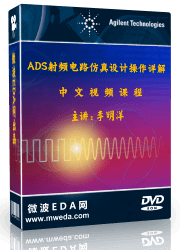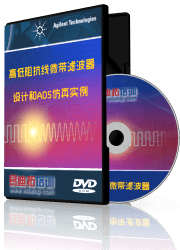- 易迪拓培训,专注于微波、射频、天线设计工程师的培养
Any built-in element in ADS/MATLAB for doing de-embedding
I am just wondering that, since the process (algorithms, equations) of some de-embedding or calibration techniques such as TRL, LRM, ect. are well defined, have they been implemented as standard elements in ADS or standard functions in MATLAB (RF toolbox, maybe) ?
For example, in ADS, if this feature were to exist, I just bring my measured S parameters of DUT (including results from test fixture), thru, reflect and line and then insert these S2P data in ADS. Then, there should be a block or function to take care of these S2P data according to a de-embedding de-embedding technique. Then this element will calculate the S parameter of the DUT directly. This would be fantastic :D
Do these feature really exist ?
Thank you in advance,
DYL
Hello DYL,
Yes, these Deembedding or Negate block are available in CAD tools such as AWR Microwave Office (MWO) ...I don't know about ADS but it is possible in MATLAB to construct such functionality...
There is a good example similar to what u mentioned is available at AWR MWO installation folder Deembed_a_device.emp---De-embedding the matching networks from a device this uses a element called the two port negate element "NEG2"...
Thank you for info, manju :)
There is a work around you can try with ADS if you want to get intrinsec s-parameters of the DUT. One would be like this,
1- plot K using s2p file on ADS and write down its value for 5/15/30 GHz
2- do it again but having in the schematic for this case the plated through holes used in the characterization board, the manufacturer will typically provide the info.
3-Add in series with the plated through holes a single ideal inductor of a negative value. Adjust the value of this negative L such that the stability factor K measured in note 2 above is now equivalent to the original stability factor K achieved in note 1. (Fortunately or not, stability factor is a very good tool because it is very sensitive to source inductance).
4-re simulate point 1 but now adding the negative inductor value found on 3.
That should give the intrinsec sparameters of the DUT
I hope this helps.
Cheers
Hi
To use negate elements from ADS/MWO, you must have (measured or EM simulated) S parameter block of connectors, transitions and line lengths before you can successfully use it. If you have OSL or TRL calibration data, you must implement equations for de-embedding. Both, ADS and MWO have the equation capability.
flyhigh
申明:网友回复良莠不齐,仅供参考。如需专业帮助,请学习易迪拓培训专家讲授的ADS视频培训课程。
上一篇:Simulation of multiple values in ADS
下一篇:How to adjust LNA gain in ADS
ADS中文视频培训教程 | More...
 国内最全面、最专业的Agilent ADS培训课程,可以帮助您从零开始,全面系统学习ADS设计应用【More..】
国内最全面、最专业的Agilent ADS培训课程,可以帮助您从零开始,全面系统学习ADS设计应用【More..】
- Agilent ADS教学培训课程套装
- 两周学会ADS2011、ADS2013视频教程
- ADS2012、ADS2013射频电路设计详解
- ADS高低阻抗线微带滤波器设计培训教程
- ADS混频器仿真分析实例视频培训课程
- ADS Momentum电磁仿真设计视频课程
- ADS射频电路与通信系统设计高级培训
- ADS Layout和电磁仿真设计培训视频
- ADS Workspace and Simulators Training Course
- ADS Circuit Simulation Training Course
- ADS Layout and EM Simulation Training Course
- Agilent ADS 内部原版培训教材合集









 沪公网安备 31011202014168号
沪公网安备 31011202014168号
 1427313829
1427313829 旺旺在线
旺旺在线 Skype Online
Skype Online 13761612886
13761612886 官方淘宝店
官方淘宝店
